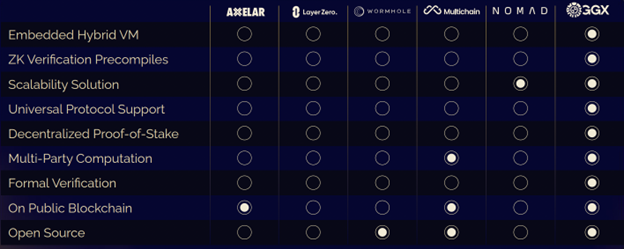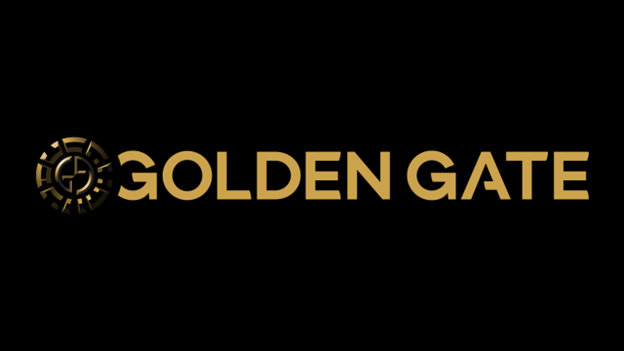Reason to trust

How Our News is Made
Strict editorial policy that focuses on accuracy, relevance, and impartiality
Ad discliamer
Morbi pretium leo et nisl aliquam mollis. Quisque arcu lorem, ultricies quis pellentesque nec, ullamcorper eu odio.
Today, blockchain networks are highly fragmented across numerous L1s and L2s, many of which were built bottom-up without interoperability considerations. This fragmentation has forced crypto-native activity across DeFi, NFTs, and various other verticals created through blockchain technology to develop in siloed environments independent of one another. In an attempt to solve this, we have seen numerous bridges and general messaging protocols built to transmit messages and assets quickly and efficiently between these siloed environments, hypothetically without the need for intermediaries and centralized infrastructure.
Many solutions that claim to solve the interoperability problem fail to deliver on that promise fully. The resulting systems depend on new intermediaries with different vulnerabilities, decentralized in name only. To address this problem, Golden Gate is building an interchain infrastructure protocol to unify and protect Web3 ecosystems across the fragmented L1 and L2 universe, enabling genuinely efficient and secure cross-chain activity to take place at scale.
Enter Golden Gate
Golden Gate is a novel interchain infrastructure protocol that solves interchain communication and liquidity transfer challenges. The protocol eliminates Layer 0 communication friction by delivering protocol-agnostic communications, which allows for communications across all major standards – whether based on IBC, XCMP, LayerZero, amongst others. A Hybrid Virtual Machine has been embedded into the Layer 0 to make it programmable. Moreover, the protocol enables cross-chain orchestration via smart contracts and zkSNARKs for efficient liquidity synchronization. For scalability, Golden Gate serves as a relay chain connected to various parachains. For efficient cross-chain communication Golden Gate uses a novel Incentivized Message Delivery Protocol (IMDP). IMDP uses a network of couriers running light clients to deliver messages and earn rewards from user fees. A call to Golden Gate’s smart contracts triggers the courier network and works as pictured in the sequence diagram below:

One of Golden Gates’ core features is its compatibility with other messaging protocols. With its ability to aggregate the functionality of other messaging protocols and its own, Golden Gate is universalizing cross-chain liquidity, solving the problem of liquidity and communication fragmentation across blockchains and communication standards. When other blockchain ecosystems are not directly connected to the Golden Gate Relay Chain, other protocols may be used, and even extended, including:
- LayerZero – The LayerZero protocol involves two actors: oracles and relayers. When supporting LayerZero, the Golden Gate blockchain serves as a decentralized oracle, forwarding block headers from the source to the destination chain. Moreover, Golden Gate extends this capability by notarizing contract states and emitted events, which improves efficiency, while the courier network serves as the relayer.
- IBC – The Inter-Blockchain Communication Protocol (IBC) can also be used within Golden Gate when needed. While any blockchain with smart contracts may implement IBC, the gas costs are too high in practice due to its use of specific elliptic curves that are still waiting for support by the EVM. To overcome this Golden Gate includes first-class IBC support.
- XCMP – Because the use of XMCP between two parachains requires a shared execution environment (relay chain), it is only used within Golden Gate when two parachains are communicating with eachother.
Tech Specs
Golden Gate uses several technical breakthroughs across scalability, decentralization, orchestration, and light client synchronization.
For improved scalability, Golden Gate uses a Substrate-based relay chain architecture, where it secures connected parachains and also bridges to as many other relay chains as possible, enabling parachain communication even between separate relay chain networks.
Committed to decentralization, Golden Gate uses Nominated Proof of Stake (NPoS) to achieve a high Nakamoto Coefficient. In doing so, Golden Gate implements the phregmms algorithm, where users nominate multiple potential validators such that the stake gets evenly distributed, creating a more democratic and decentralized system where users’ say carries weight.
Golden Gate is programmable using an embedded Hybrid Virtual Machines. Leveraging Astar’s cross-virtual machine (XVM) pallet, Golden Gate supports multiple virtual machines, including the EVM and WASM. This means developers can deploy dApps written in Solidity or any language that compiles down to WebAssembly (e.g. Rust and TypeScript). This makes building on Golden Gate accessible to the 300,000 Solidity programmers, plus the additional 30,000,000 programmers that code in languages that compile down to WebAssembly, opening Golden Gate to developers beyond just the crypto-native tech communities. Additionally, by precompiling zero-knowledge proof verification to the Golden Gate Hybrid EVM (notably Groth16 and Plonk), developers may deploy ZK programs with native on-chain support, something very challenging to accomplish in an environment like the EVM. Multi-Party Computation (MPC) is leveraged for succinct and secure cross-chain communication on Golden Gate.
For a more detailed technical dive into Golden Gate, the whitepaper can be found here.
The Interoperability Landscape
Despite the numerous interoperability protocols that have come to market over the past couple of years, they are all trying to connect siloed blockchain ecosystems with an array of competing standards, with highly variable degrees of security. Because of this, we have seen one cross chain solution after the other get exploited in late 2021 and throughout 2022, totalling billions of dollars being lost in spectacular fashion.
Golden Gate vs. Others

Golden Gate stands out in this environment by taking the best of lessons from the market and combining them in a novel architecture that emphasizes decentralization, security, and liquidity unification. By solving these key issues, and remaining backwards compatible with existing solutions, Golden Gate is building for a future where building and operating cross chain is not just secure, but seamless.
Today, Web3 is largely fragmented with siloed ecosystems, similar to data networking in the 1960s and 1970s where fragmented networks such as ARPANET, Stanford, UCLA, CYCLADES and others were eventually connected together through the development of a vast array of inter-network infrastructure; resulting in the Internet as we know it today. Fragmented networks were eventually abstracted away in a secure and efficient manner that united these isolated networks. Golden Gate believes that in the future the fragmented infrastructure of Web3 will also be connected. Ultimately isolated blockchains will be abstracted away like the isolated pre-internet networks before them. Golden Gate’s mission is to unify Web3’s fragmented infrastructure and protect communications and liquidity through higher security standards and the principles of decentralization and composability.
ABOUT GOLDEN GATE
Golden Gate (GGX) is interchain infrastructure that delivers protocol agnostic cross-chain communications and liquidity routing, featuring comprehensive security architecture. Golden Gate is delivering a next-generation programmable layer 0, with an embedded hybrid virtual machine, and advanced DeFi orchestration capabilities that contributes critical infrastructure for Web3’s emerging “Internet of Blockchains.” Golden Gate is developed by a team that collectively helped build key components of our industry’s first generation fragmented infrastructure, now with the mission to bring frictionless composability and enhanced security standards to Web3.
Contact Details Golden Gate, Lisa Loi, info@ggxchain.io
Disclaimer: This is a paid release. The statements, views and opinions expressed in this column are solely those of the content provider and do not necessarily represent those of NewsBTC. NewsBTC does not guarantee the accuracy or timeliness of information available in such content. Do your research and invest at your own risk.



























